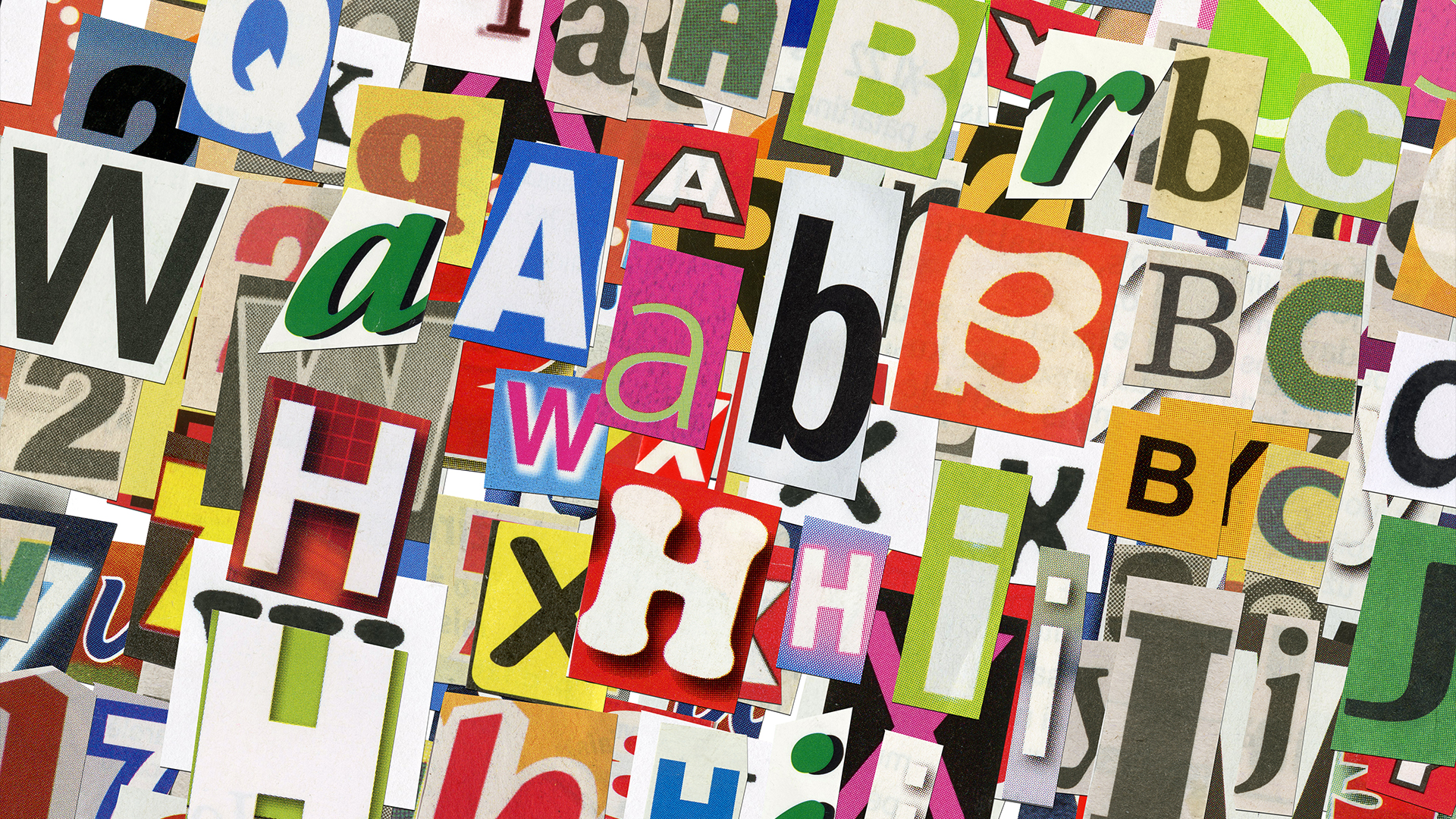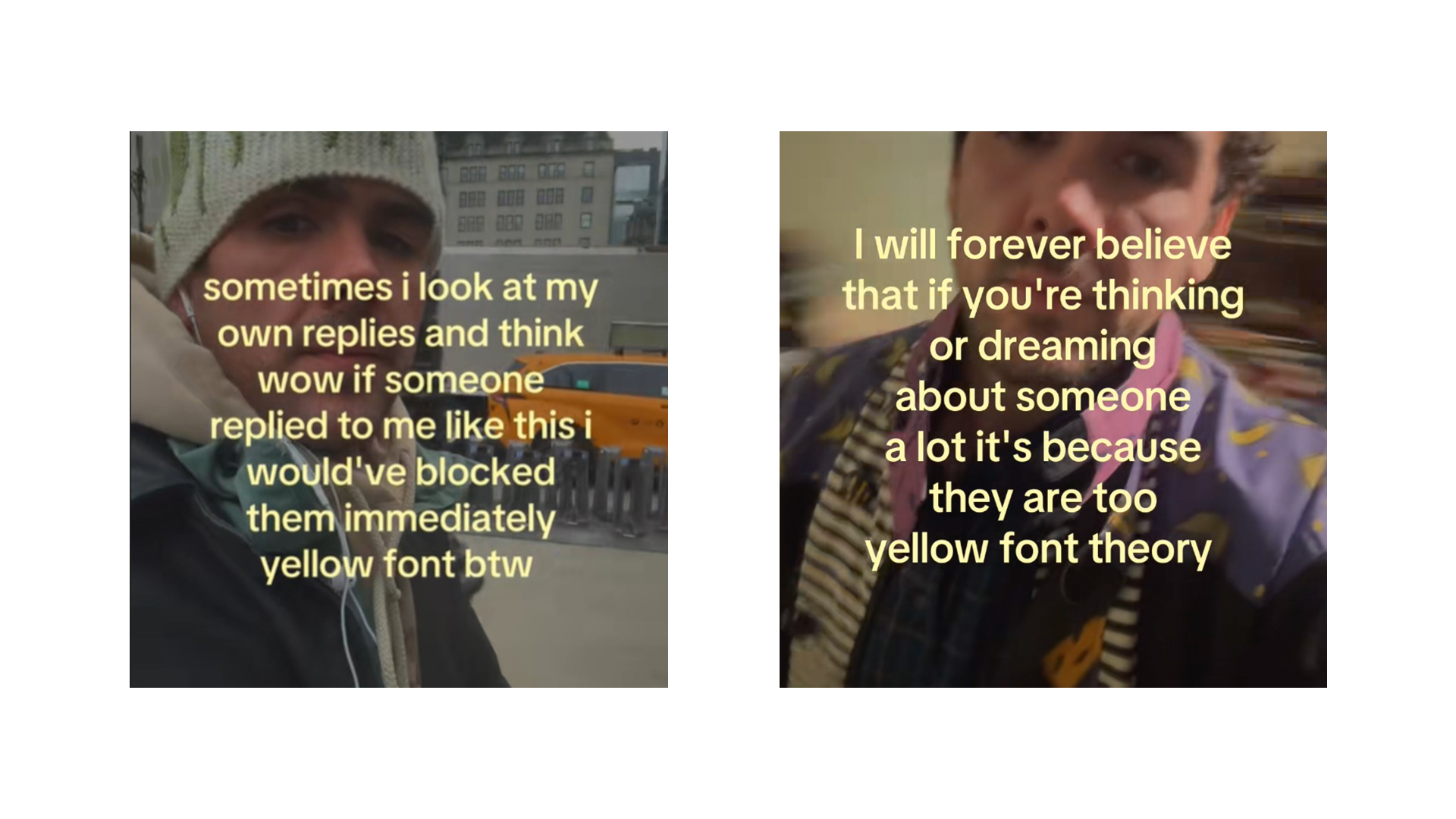A complete guide to font licensing for designers
Understanding font licensing is crucial to avoid issues with the delivery of a design project.

Navigating the world of font licensing can be a tricky and unglamorous task, but it's important to understand how it works to avoid any complications down the line. Different fonts have varying licensing agreements, making it easy for you (or your clients) to fall into legal trouble if your chosen style isn't fully licensed for your intended use.
There are plenty of things to consider when working out how to license a font (including deciding if it's font vs typeface you're after) and while making use of free fonts might seem like an easy way to get around font licensing for designers, it's not the sly cheat code it might seem to be. In this guide, we'll take you through the basics of font licensing, the common types you'll come across and what to look out for to avoid complications.
What is font licensing?
Fonts are installed on our computers and as such they are considered to be software. Like other software, when you buy a font, you are actually buying a license to use it and agreeing to conditions set out by the seller. The font license is a document that outlines those conditions. In the same way that copyright protects your work as a designer, enabling you to earn a living without people stealing your designs, a font license protects the typographer’s right to charge for the use of their creations.
While copyright law is different in the US, UK and in other countries around the world, font licenses are written in a way that gives you the right to use the software regardless of territory.
Do font licenses cover the font or the typeface?
Although these two terms are often used interchangeably, they have distinct meanings. A typeface is a family of fonts that share aesthetic characteristics, while a font is a subset of characters in a specific size, weight and style.
For example, VAG Rounded is a typeface, while VAG Rounded Pro Bold and VAG Rounded Standard Light are separate fonts sold by Linotype. You can license VAG Rounded in its entirety, or just the specific fonts you need. You need to be aware of whether you are licensing the entire typeface or just the font. Read our article font vs typeface for more about the difference.
How to license a font
One of the trickiest things about font licensing is that each foundry and online font shop has its own terms and pricing structures. Generally, though, the cost of a font license boils down to how you intend to use the font. The cost can differ greatly between using the font on 100 T-shirts and using it on a website with 20 million monthly page views. Below are the main types of font licenses you’ll come across.
Daily design news, reviews, how-tos and more, as picked by the editors.
Types of font licenses
Desktop font licenses

According to Aideen Greenlee, head of account management at Dalton Maag, the most common font licensing question foundries receive is ‘Can I use this font to create a logo?’ With a desktop font license the answer is usually ‘yes’.
Sometimes called an end-user license, a desktop license enables you to install a font on your computer and use it for a whole range of offline purposes. As well as logos, you can use it for other graphics, print collateral, signage, merchandise… pretty much anything in print. You need to watch out for the number of users allowed to install the font under the license you’ve purchased, and whether or not you can use it for commercial projects.
Sellers generally offer scalable desktop licenses. When you add desks, you buy more licenses and when your project goes from pitch to live status you upgrade to a commercial license. One thing you can’t do is give the font to your client – they’d need to buy their own license to use it, even if that’s just for editing text within a layout.
Commercial font licenses
These days, most desktop licenses enable you to create client work using the font. However, it is always worth checking. Some do not and in these circumstances, you’ll need to buy a commercial license – and possibly one for your client as well.
Webfont font licenses

When a font is used for website text, it typically needs to be embedded into the site’s code so that it will display properly on the end user’s screen. Consequently, the font will sit on a server and will be given away, in a sense, with each page view. This isn’t really a problem, but it does mean that when you use a font for website design a different license is required.
In some cases, web font licenses work on a per view basis. For example, Good Type Foundry charges €450 for its flagship Good Sans if page views are below 15,000 per month. The license scales up, reaching €2,600 if the site receives up to one million page views. When using a web font you may be asked to embed some code in a site so that the foundry can count the traffic.
Other web font licenses have no traffic restrictions. Instead they have time and/or domain limits. If your client has .co.uk, .com and .net, and intends to run their site in perpetuity, then the costs will ramp up so make sure they’re covered.
See our free web fonts roundup to see web fonts that don't cost anything (of course, be sure to double check the terms).
Adobe Fonts licenses

If you use Adobe's Creative Cloud suite of apps, the package comes with an excellent source of fonts with fairly straightforward font licensing arrangements already in place. Adobe Fonts (formerly TypeKit) includes over 20,000 fonts and gives you desktop licenses to use all of them. When you start a new project you can simply log-in, browse and begin trying out new font combinations. Easy peasy, right?
Well, there are a few things to watch out for. While you do also get a web font license to use any of the fonts in sites created for clients, this license will have an expiration date. At that point, your client will have to buy Creative Cloud to gain licenses to carry on using the fonts on the site. Furthermore, Adobe Fonts can’t be used in server applications, nor in mobile apps, without you buying further licenses for these uses.
Server font licenses
This is an unusual category, but it’s worth mentioning. Server font licenses are typically used in print on demand applications. For example, if you’re designing a site that enables users to choose the fonts used on a card, T-shirt or mug that will be printed and shipped, the font licensing conditions will be different. The license may have a time limit on it, and you may need to buy a license for each CPU in your server package.
App and ePub font licenses
If your client has briefed you to create their new website and the accompanying app, be aware that the app won’t be covered by a web font license. If the font needs to be embedded in an app, you’ll need an app font license to do so. Usually, these are on a per-app basis and costs may ramp up with the user base.
The same is true for ePub formats such as digital books and magazines. One thing to look out for here is new editions. You may need to re-license a font if you update and release a new version of an ebook, and you may need a fresh license for each issue of a digital magazine you put out. There may be stipulations on readership numbers and timescale, so check the license carefully when buying.
Unlimited font licenses
If your client is a large organisation, it might be worth negotiating an unlimited font license with the foundry. This would give them the right to use the font on as many computers as they wish and for any offline purpose they wish. From advertising campaigns to apps, they’d be covered and so would you as their design agency. Unlimited licenses usually cost over $10,000/£10,000 but will keep your client out of typographic hot water in perpetuity.
Exclusive font licenses

You may even wish to contract a typo foundry to create a bespoke typeface for your client and their projects. Under the license, your client would be the only organisation able to use the fonts. The cost for this type of font licensing is usually upwards of around $30,000 / £30,000.
Free font licenses

These are the best, right? Well, sometimes you get what you pay for… Many of the free fonts out there lack the quality or the uniqueness that you can get with paid-for fonts designed by the best foundries. Furthermore, just because a font is free that doesn’t mean it isn’t covered by a license. Some free font licenses have strict conditions allowing you to use the fonts in personal design work, and maybe for pitches, but not in commercial work. As a result, if the fonts appear in published client work, commercial license conditions kick in, requiring payment.
However, many excellent fonts are available on a completely open source basis, including the best Google Fonts. In total, Google Fonts has over 1,500 options that can be downloaded, installed and used in print, web and app projects under Google’s free Apache License.
Font licensing: How to avoid problems
Font licensing: How to avoid problems
While foundries and online font shops do try to make it as easy as possible to buy font licenses and apply them correctly in your work, there can be anomalies. However, when problems occur, most of the time they are easily resolved through the purchase of the correct license.
The best way to avoid a bad situation is to make font license checking part of your process – particularly for client work. Before you show a client initial design proposals, double check that the fonts you’ve used have been licensed. And if you haven't make sure you know how much they will cost to licence and that your agreement with the client makes clear who is responsible for the at cost.
"If you are not sure exactly which license you need, it is always a good idea to talk to the type designers and explain to them what exactly you need," says Font Cuisine owner Julien Fincker. "They will be happy to help you so that all parties can be sure that they have the right license."
What font license do I need for logos?
To use a font in your logo you'll typically want a desktop font license, sometimes called an end-user license. This license allows you to install the selected font on your computer for use in static images or print.
Many free fonts may list that they are 'free for commercial use' but if you choose this route make sure you're properly reading the licensing terms (most sites like Adobe or Google fonts will display these clearly when you download the font).
For a bespoke logo font with a unique edge, commissioning a font foundry is a great option. While it's naturally a pricier choice, working with a foundry gives you the benefit of a collaborative curated design process, resulting in a wholly original design that'll give your brand a standout appeal.
Thanks to Good Type Foundry, Font Cuisine and Dalton Maag for guidance on this font licensing guide.
For more tips, see our guides to what it typography and how to design a typeface.

Garrick Webster is a freelance copywriter and branding specialist. He’s worked with major renewable energy companies such as Ecotricity and the Green Britain Group, and has helped develop award-winning branding and packaging for several distilleries in the UK, the US and Australia. He’s a former editor of Computer Arts magazine and has been writing about design, creativity and technology since 1995.
You must confirm your public display name before commenting
Please logout and then login again, you will then be prompted to enter your display name.
